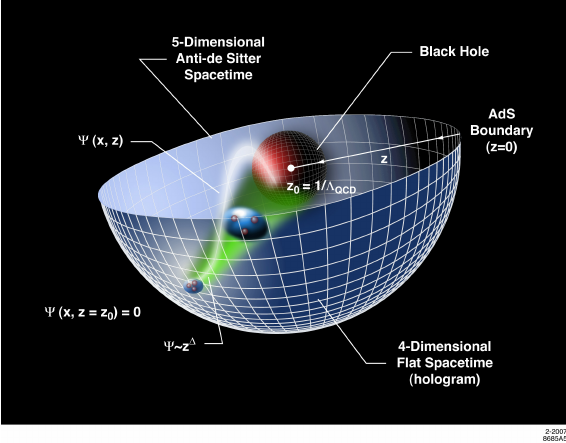Katya Sumwalt, SDSC Communications, contributed to this story.
Our description of the Universe includes four fundamental forces – the strong and weak interactions that occur at very short-length scales and govern the properties of nuclei, and the forces of electromagnetism and gravity, which act over longer distances. While the first three can be understood using quantum mechanics, gravity is described by a classical theory – general relativity. It has long been a goal of theoretical physics to merge quantum mechanics and general relativity to produce a theory of quantum gravity. It’s needed to understand gravity in extreme environments, such as inside black holes and at the earliest instances after the Big Bang.
Syracuse Physics Professor Simon Catterall recently used an ACCESS allocation on the Expanse supercomputer at the San Diego Supercomputer Center (SDSC) at UC San Diego to simulate a theory of elementary particles that will help scientists better understand quantum gravity. The quantum field theory in question is known as “N=4 super Yang-Mills,” and the work was carried out in collaboration with Syracuse Graduate Researcher Goksu Can Toga and Renneslauer Polytechnic Institute Professor Joel Giedt.

The “super” in the name reflects the fact that the theory possesses a “supersymmetry” that exchanges force-carrying particles like the photon with matter particles like quarks and electrons – where every known particle in the standard model has a supersymmetric partner. The force carriers in N=4 super Yang-Mills are similar to the gluons that occur in the theory of nuclear forces – the Yang-Mills theory called QCD or quantum chromodynamics.
“The remarkable thing is that it is conjectured to be dual, that is equivalent to, a string theory that incorporates Einstein’s theory of general relativity at low energies,” Catterall said. “This duality was postulated by Juan Maldacena of the Institute for Advanced Study in Princeton about 20 years ago and is usually termed the AdSCFT correspondence.”
Catterall said that the strange thing about this dual gravitational theory is that it lives in a curved 5-D space called anti-de Sitter space, while the Yang-Mills theory (which does not include gravity) lives at the 4-D boundary of this space. This has led to the alternative name for the AdSCFT correspondence as a holographic duality since all the information on the gravity theory is encoded on the boundary of the space like a hologram.
“This idea of a holographic correspondence has generated a huge amount of interest and follow-up work in theoretical physics throughout the world – generalizations of this idea have even been used in condensed matter physics to try to explain novel phenomena like high-temperature superconductors,” Catterall explained. “This conjecture has only been verified in a certain limit of the parameters where certain approximations hold and the goal of our research is to formulate and calculate with the theory everywhere in parameter space using numerical simulation.”
Catterall, Can Toga and Giedt have published their results in the Journal of High Energy Physics.
We’re thrilled that the researchers were able to use Expanse to make progress on quantum gravity, which is widely considered to be one of the most important unsolved problems in physics.
– Robert Sinkovits, physicist and project manager for the Expanse supercomputer
Catterall’s research requires the theory to be formulated on a lattice in spacetime, which is very difficult to accomplish without breaking the supersymmetry. However, several research teams – including Catterall’s group- have solved this discretization problem.
“About a decade ago, we were able to formulate the theory,” Catterall said. “But only in the last two years have we been able to implement simulations of this lattice theory using optimized parallelized code on supercomputers like Expanse at SDSC. We are thus just beginning to truly understand the holographic dualities using these new tools.”
Project Details
Resource Provider Institution(s): San Diego Supercomputer Center (SDSC)
Affiliations: Syracuse University, Renneslauer Polytechnic Institute
Funding Agency: NSF
Grant or Allocation Number(s): PHY230210
The science story featured here was enabled by the U.S. National Science Foundation’s ACCESS program, which is supported by National Science Foundation grants #2138259, #2138286, #2138307, #2137603, and #2138296.


